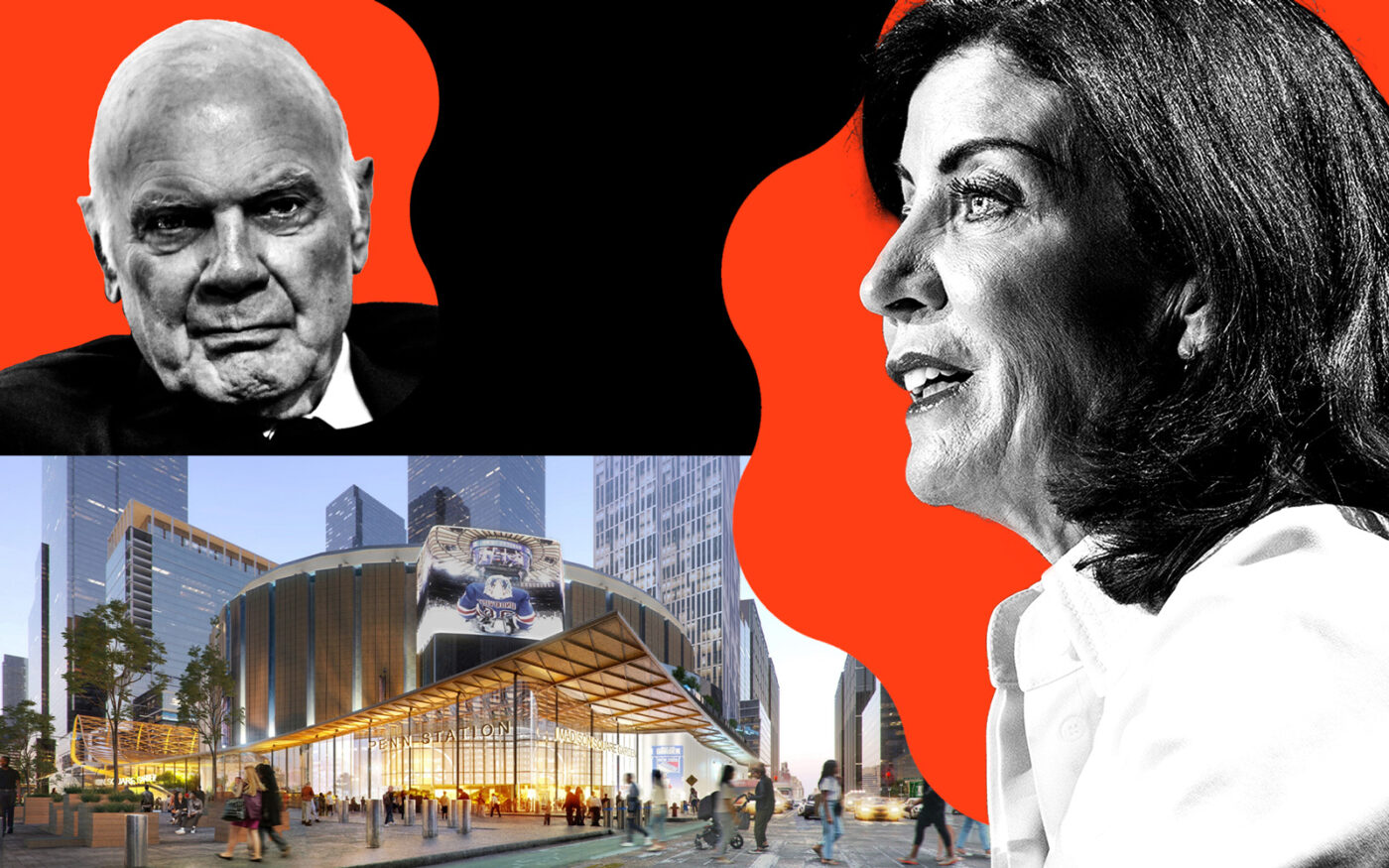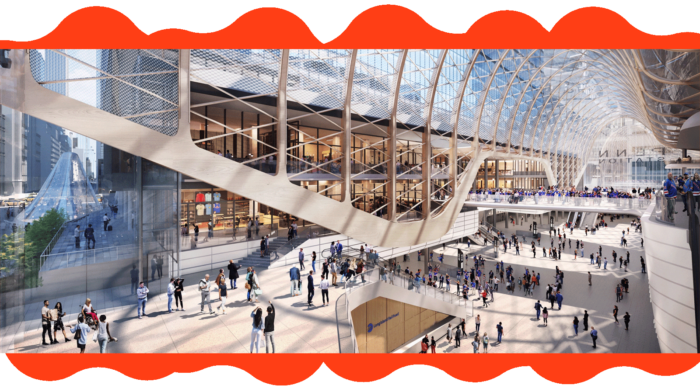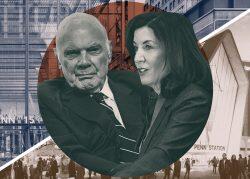 Vornado’s Penn plan, decades in making, reaches inflection point
Vornado’s Penn plan, decades in making, reaches inflection point
Hochul shelves Vornado-led Penn Station megadevelopment
State to focus on station redesign after Steve Roth’s firm said it’s pausing new projects

Vornado’s Steve Roth, Gov. Kathy Hochul and a rendering of the Penn Station redesign (Getty, NYC Mayor’s Office)
Gov. Kathy Hochul is shelving plans to build a cluster of office towers around Penn Station after Vornado Realty Trust pumped the brakes on ground-up development.
The state is “decoupling” the station’s redesign from a broader plan to fund it by constructing 18 million-square-feet of commercial towers in its immediate vicinity, the governor announced. She also rebooted the redesign of the station, saying the state was open to new ideas for the project.
“We are decoupling two components,” Hochul said during a press conference Monday. “We are going to focus on this building itself and its immediate environs.”
Hochul indicated that the decision does not mean office towers will never be built around the station, nor that demand for such space will not return.
“We have to deal with the realities we’re in,” she said, adding that moving forward with the redesign would provide time to rethink the broader development, perhaps to include more housing.
Part of that reality is Vornado is backing away from ground-up development. CEO Steve Roth has repeatedly referred to the hostile economic environment for commercial projects, though he has maintained that a pause on the Penn towers does not mean the firm is abandoning development there altogether. Vornado controls most of the eight sites surrounding Penn that were part of the governor’s plan, and Roth last month indicated that the project would “likely start with an apartment project.”

Hochul’s announcement was not unexpected, as the governor had previously indicated that she was open to alternative proposals for the station’s renovation. The redesign and expansion of the station and the broader development around it were already separate projects. The governor indicated Monday that she was not waiting for the proposed towers to generate revenue to fund the other projects.
The broader development was intended to fund upgrades to the transit hub through payments-in-lieu of taxes as well as tax-exempt bonds and federal loans. The PILOTs were expected to generate as much as $3.75 billion.
On its own, the station’s overhaul is expected to cost $7 billion. The state has already committed $1.3 billion toward the project, and Hochul said the state has applied for federal funds.
This is not the first time Hochul has set aside certain aspects of the state’s broader vision for Penn. Within a few months of taking office, she tweaked former Gov. Andrew’s Cuomo’s plan, and put the expansion of the station on ice, opting to focus on renovations and large-scale development around it. The expansion would require the state to take control of and demolish 50-plus properties to the station’s south.
Plans to redevelop Penn Station have had several false starts over the past two decades, and Hochul has already hit a few speed bumps.
The governor characterized Monday’s announcement as the start of the design process, but the news comes roughly one year after she announced that the state would begin accepting bids for Penn’s redesign. In September, the state awarded a $58 million contract to FXCollaborative Architects and WSP USA for preliminary engineering and architecture work. British architect John McAslan + Partners was also hired as a collaborating partner.
The design team was just granted a “notice to proceed,” meaning that it can actually begin the preliminary design work that it was contracted to do a year ago, according to the MTA. At the end of this work, which includes an environmental review, the MTA will put out a request for firms to complete the remaining design and construction work.
The redesign will be based on the station masterplan, a vision that includes removing the station’s upper level to create a 250,000-square-foot, single-level facility. It also includes a concourse that would be larger than those in Moynihan Train Hall and Grand Central Terminal combined. But the hall would be built on a block-long area that includes a defunct taxiway owned by MSG Entertainment, which has not supported the idea.
MSG sent a letter to City Planning last week saying that “the conceptual plans for the Penn Station reconstruction do not work,” citing, among other things, that the mid-block train hall would create problems for trucks pulling up to the arena.
Though MTA chair Janno Lieber briefly discussed that vision for Penn, Hochul indicated that the state is “entertaining all options” for the redesign. She said the state is open to letting any architecture and engineering firm compete for the chance to take on the project.
Still, Monday’s announcement seems to deflate a highly publicized plan promoted by Italian firm ASTM Group, which calls for the removal of MSG’s Hulu Theater.
Read more
 Vornado’s Penn plan, decades in making, reaches inflection point
Vornado’s Penn plan, decades in making, reaches inflection point
 Office stocks are “stupid cheap,” Vornado’s Roth says
Office stocks are “stupid cheap,” Vornado’s Roth says
 Penn Station vote clears way for deals with developers
Penn Station vote clears way for deals with developers




